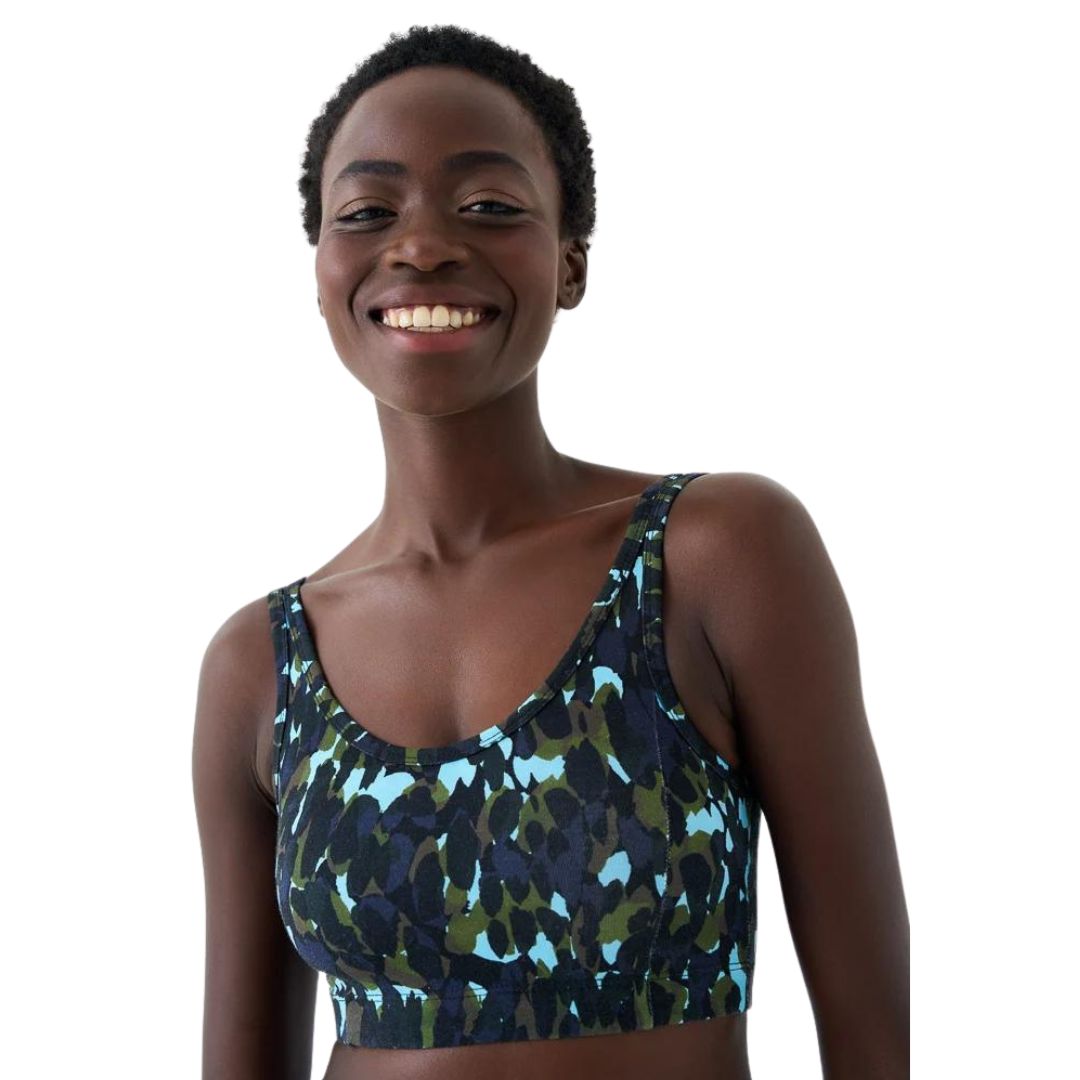Just in: these are the simplest ways to up your physical fitness at home, no gym membership needed
Because who wants to brave the cold right now?


If the cold weather has you reconsidering your health goals for 2024 (running? In minus temperatures? Be serious), hold the phone while we talk you through how to improve physical fitness at home. Because, although we’re big advocates for gym-based training and outdoor movement, the reality is that sometimes it makes exercising feel especially challenging.
Enter stage right, this expert guide to the best home workouts - because accessible and attainable workouts are the key to building a consistent routine that you'll a. stick at and b. enjoy. You don't have to tell us that this, come winter time, can be particularly challenging - your every cell craves comfort and warmth, and the prospect of working out or commuting in the cold is about as appealing as downing shots of cod liver oil.
At this time of year, it makes sense to tweak your routine to accommodate the weather and honour your body’s needs. Enter: home workouts. You don’t need us to remind you why it's so important to prioritise living an active lifestyle. But, if you’re a numbers person, you may find it useful to know that research suggests an average energy expenditure of around 1000 calories per week is associated with a 20% to 30% reduction in all-cause mortality. This equates to roughly 150 calories a day, which the iPhone Health app indicates is the equivalent of around 6,000 steps, give or take.
So, if you’re among the many looking to give your wellbeing a boost this year (while also avoiding the cold snap), keep reading for a top PT’s advice on how to improve physical fitness at home. Simple home workouts at the ready.
How to improve physical fitness at home
What are the benefits of improving your physical fitness at home?
We’ve touched on it already, but physical fitness is hugely important. “Improving your physical fitness is going to have a positive impact on every aspect of your life – from your mental wellbeing and habits to your overall quality of life,” says Natalie Rose Edwards, PT, founder of Body By Barre Studio and creator of the viral 3-2-8 method. “It also supports your health, core strength, metabolism, posture, and mobility, and reduces the risk of osteoporosis or diseases later on in life.”
Working on your physical fitness has a clear ripple effect, too. After consistent training, you'll likely notice improvements in your sleep quality, boosted energy levels, and reduced stress, too.
As for the specific benefits of exercising at home? According to Edwards, there are many. “Working out at home cuts out the commute to the gym, saving time if your schedule tends to be busy, and you can wear whatever you like, while feeling comfortable in your own space,” she says. It’s a good point – Pure Gym’s 2023 UK Fitness Report revealed that one in five people (21%) find the gym intimidating. Although exercising exclusively at home isn’t the answer (fitness facilities should feel accessible to everyone), beginning your active journey at home may help to build up your confidence so you eventually feel ready to move some – or all – of your workouts to the gym.
Celebrity news, beauty, fashion advice, and fascinating features, delivered straight to your inbox!
“You'll build confidence and muscle memory with every workout which will also boost your motivation,” Edwards says, reiterating our point. “If you have a busy schedule, start to view your home workouts like an appointment with yourself and take time each week to schedule them. Organise your workout clothes the night before and create a home workout space to save time and stay consistent.”
How to improve physical fitness at home?
Edwards recommends starting your at-home training journey with a schedule that is realistic and sustainable, considering factors such as whether a morning, lunchtime or evening workout would best suit your lifestyle, and the session length that might be best, to begin with (for instance, starting with ten-minute workouts and gradually increasing the time).
“Have a think about what equipment you might need – a pair of dumbbells, set of resistance bands and a yoga mat is a great place to start,” says Edwards. “Then, begin a programme. There are also lots of programmes available on YouTube with qualified instructors - my advice is to workout in front of a mirror to check your form and alignment and be patient with yourself.”
A programme is helpful for progressive overload - gradually increasing your weights or reps over time - and ensuring you don’t plateau, too. It also holds you accountable and will put you at ease, as you don't have to think about your workouts, rather, just crack on with them. You also won't need to worry about balancing sessions over the course of a week, or how much rest to take between sets, because a pro has done all the planning for you. “Following a programme that includes weight training will help you improve overall lean muscle mass and boost your metabolism and bone density,” says Edwards. “Combining strength workouts with Pilates workouts, yoga or barre sessions will support your mobility, release tension throughout the muscles and joints and support recovery." She also advises incorporating lots of walking, either in the form of walking workouts or just daily steps, to count towards your cardio for the week.
6 PT-recommended ways to improve your fitness at home
1. Strength training
Strength training at home can be a powerhouse where improving your fitness is concerned. Of course, it helps you build muscle and strength, but research tells us that it’s also beneficial for movement control, functional independence, cognitive abilities, and self-esteem. It may assist in preventing or managing type 2 diabetes, and may enhance cardiovascular health, too.
Strength training is also effective for reducing low back pain and relieving discomfort associated with arthritis. In short: it’s not an exercise to skip.
Try this: “Start with dumbbells – one light set and one heavy set,” Edwards advises. “Focus on your main compound lifts, such as squats and deadlifts, and prioritise form.” She recommends lifting weights two to three times per week, for at least ten to 40 minutes per session. “You will need minimal equipment to get started and you will begin to see results pretty quickly if you stay consistent,” Edwards adds.
Read what happened when MC UK Health Editor Ally Head strength trained every other day, here.
2. Pilates
It’s the workout of the moment, and for good reason. “The benefits of Pilates span improved posture, mobility, strength, circulation, core strength, mental health and wellbeing,” Edwards says.
She recommends easing in with a Pilates mat workout to learn the foundations and focus on breath control and alignment. “Practice Pilates once or twice per week for at least 10-40 minutes per session to see results and progress,” Edwards says. “You’ll require very little equipment to get going, and can even workout in your PJs - so no excuses.”
3. Barre
Combining elements of Pilates, strength training and classical ballet, barre exercises are an easy and fun way to get fit, not to mention an excellent low-impact style of workout that engages the whole body.
“You can use a chair, tabletop or kitchen counter in place of a barre,” Edwards suggests. “Start with beginner classes, which you can find on YouTube, and build up the intensity gradually.”
She recommends introducing light, one to three-pound dumbbells, ankle weights, or wrist weights when you feel ready to increase the challenge. Not so sure? Our explainer on the benefits of ankle weights will convince you, not to mention what happened when one MC UK writer tried ballet barre for home. Spoiler alert: it's a great home workout.
4. Skipping
Did you know? Skipping improves cardiovascular fitness, stamina and lung capacity, and can even help to facilitate muscle growth and maintain bone density. It’s a true all-rounder exercise that will develop everything from your power and core strength to your balance and coordination. It’s also fun and feels like play - I should know, as someone who tried a skipping challenge last year.
Try this: “Start with intervals – 30 seconds on, 30 seconds off – and put on an upbeat track to skip to the beat,” Edwards suggests. “Skipping is the perfect exercise to elevate your heart rate.”
5. Cardio workouts
Keen to know how to improve cardio fitness from home? If you have the luxury of a treadmill or stationary bike at home, using this equipment is a great way to boost your cardio fitness and meet your weekly activity goals.
Tools such as these can be especially helpful when you have a full schedule, as you can respond to emails while cycling or join a virtual meeting at your walking desk.
That said, you don't need kit to boost your cardio fitness from home - things like climbing the stairs or starting your day with some jumping squats will get your blood pumping and your heart rate up.
“I recommend starting any workout with a five to ten-minute cardio session to boost blood flow and elevate the heart rate," advises Edwards. This could be high knees, a few warm-up exercises on your stairs, or a short burst on the bike. The key thing here is making the most of what you've got.
6. HIIT
It’s not everybody’s idea of a fun workout, but high intensity interval training (HIIT) can be beneficial for heart health and cardiovascular fitness.
“The goal, when doing HIIT, is to elevate the heart rate for short bursts,” Edwards explains. “Aim for 40 seconds on, 20 seconds off.” She recommends incorporating a number of full body exercises, such as jumping jacks, squat jumps, plank taps and jumping lunges, or following a PT-approved programme for some structure.
These kinds of cardio sessions are ideal for supporting heart health, stamina and lung capacity, which is why she recommends aiming for a minimum of one a week. "They can boost your metabolism by bringing the body into a fat-burning zone," she adds.
Shop MC UK's go-to workout kit now:

Specifically designed for working out, up your workout wardrobe with this soft-to-the-touch sports bra that will support you in all the right places no matter whether you are practising yoga, HIIT or hitting the gym. Plus, you know you're investing in a company doing good - BAM is climate-positive and a certified B Corp.

Topping our guide to the best yoga mats is this super popular 5mm-thick mat that comes with a whole load of cushioning, visual alignment cues and moisture absorption. From yoga to Pilates, this mat will work just as hard as you do.
What does it mean to improve your physical fitness?
Short answer: improving your aerobic or anaerobic health simply means improving your cardiovascular ability, strength, or flexibility. This might look like being able to climb the stairs without feeling out of breath, carrying your shopping bags from the car with ease, or bending down to pick up a dropped pen without tightness in your hips.
Improving your physical fitness - and maintaining a good base level - is key to boosting your quality of life and improving your day-to-day. Think about it: life will be easier if your body is equipped to deal with challenges.

Abbi Henderson is a freelance journalist and social media editor who covers health, fitness, women’s sport and lifestyle for titles including Women's Health and Stylist, among others.
With a desire to help make healthcare, exercise and sport more accessible to women, she writes about everything from the realities of seeking medical support as a woman to those of being a female athlete fighting for equality.
When she’s not working, she’s drinking tea, going on seaside walks, lifting weights, watching football, and probably cooking something pasta-based.
